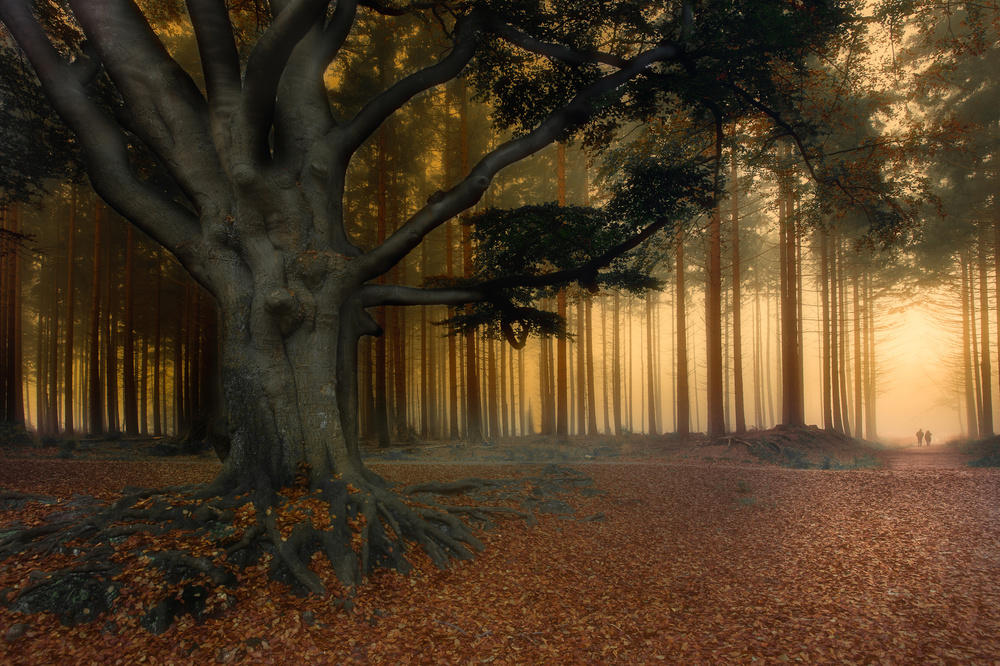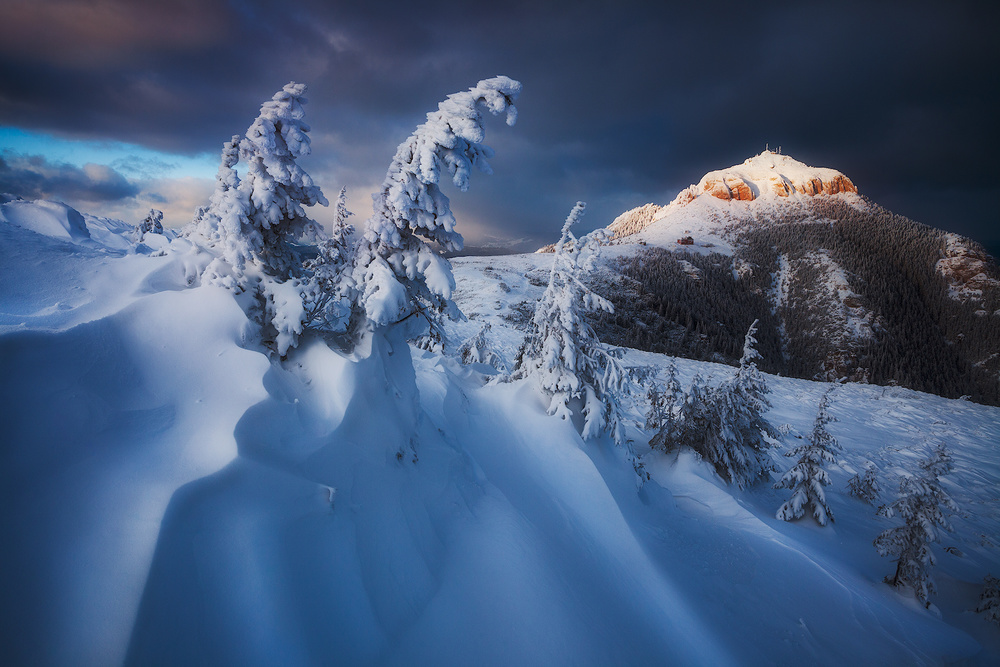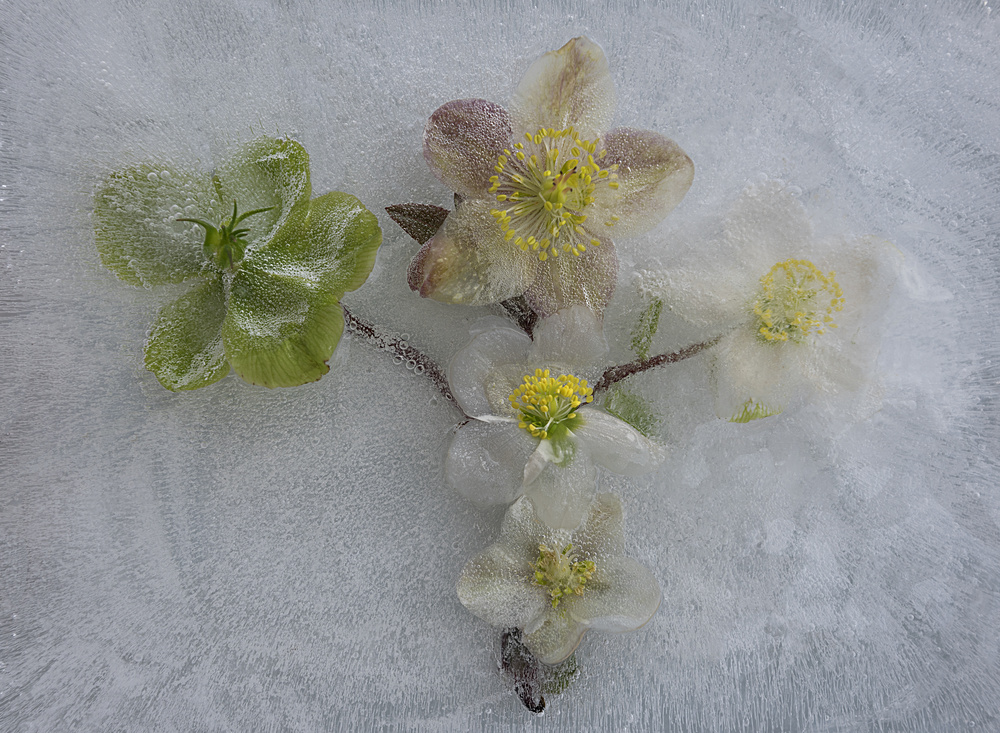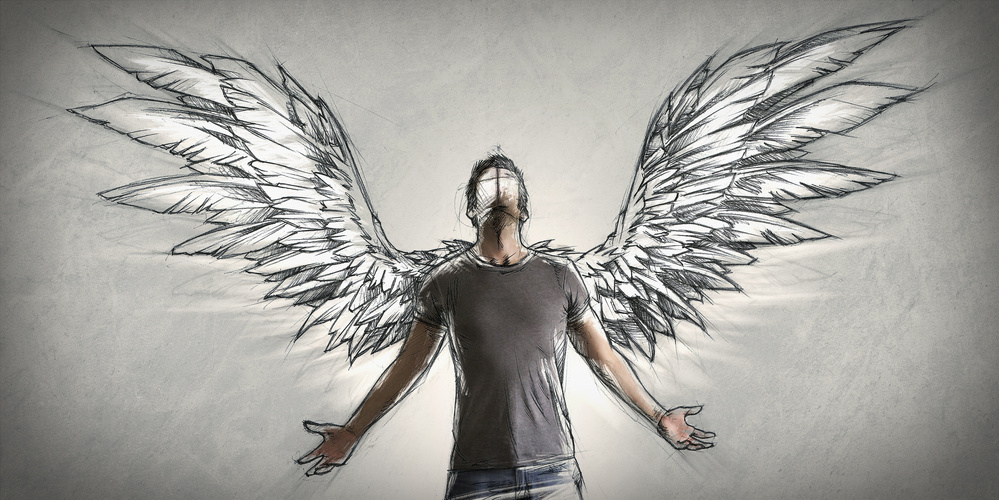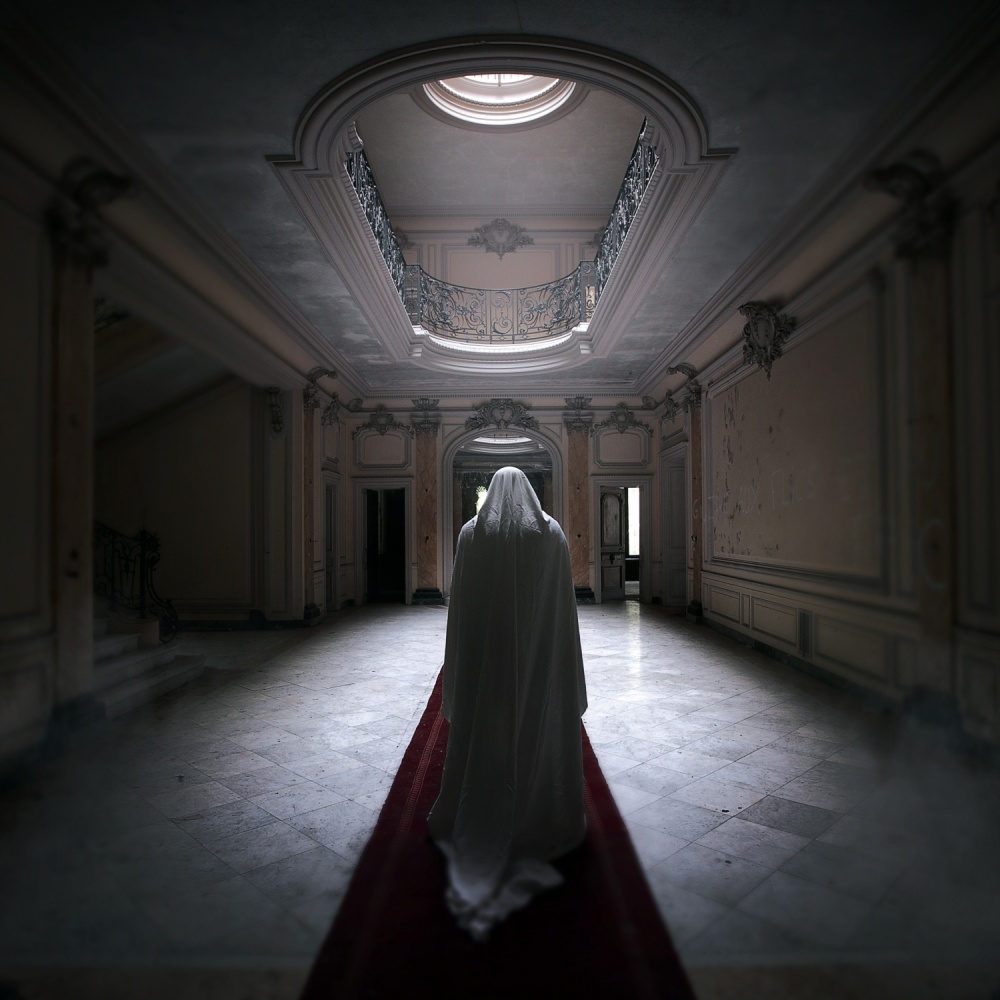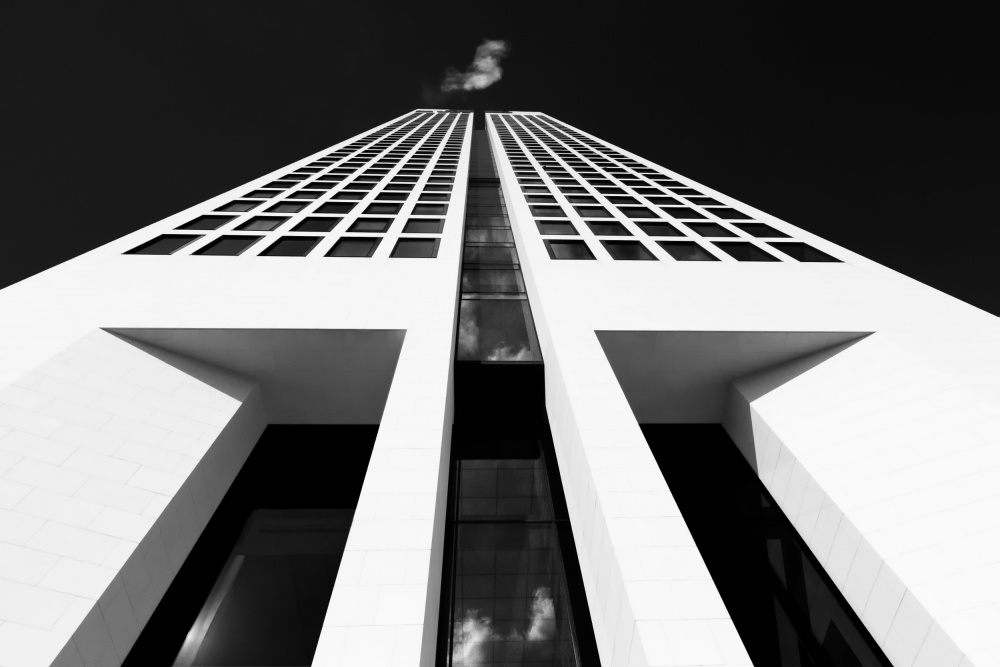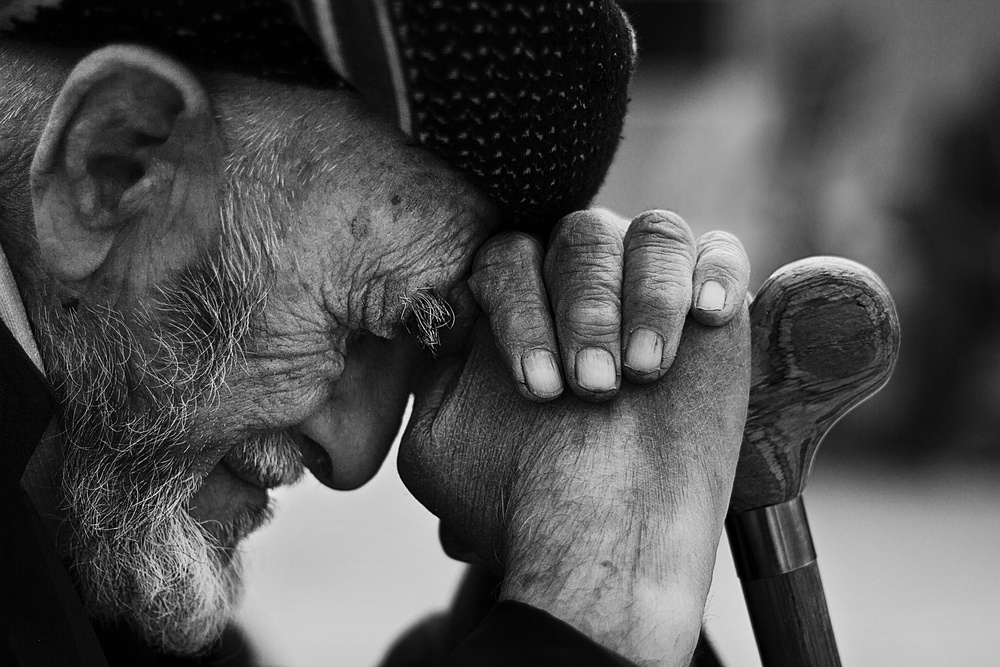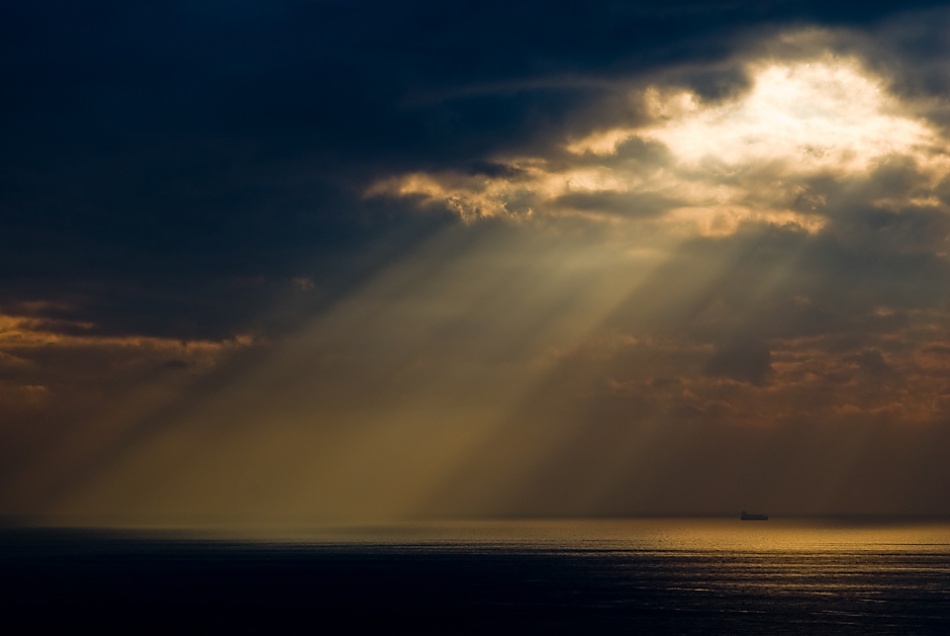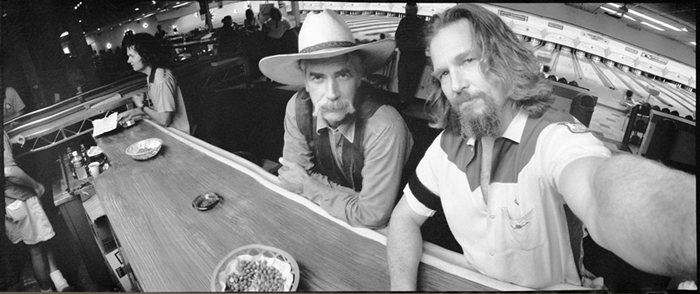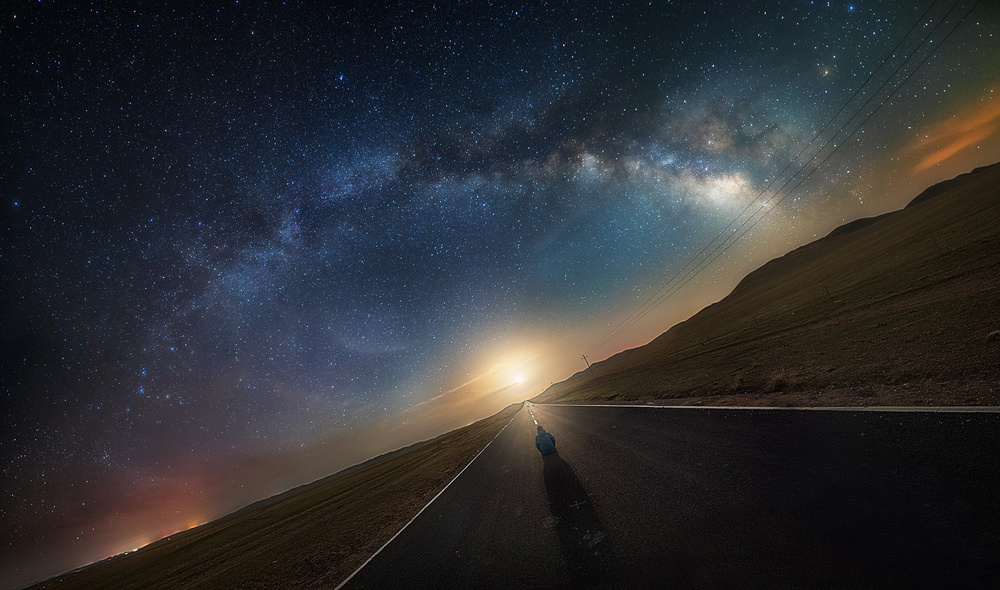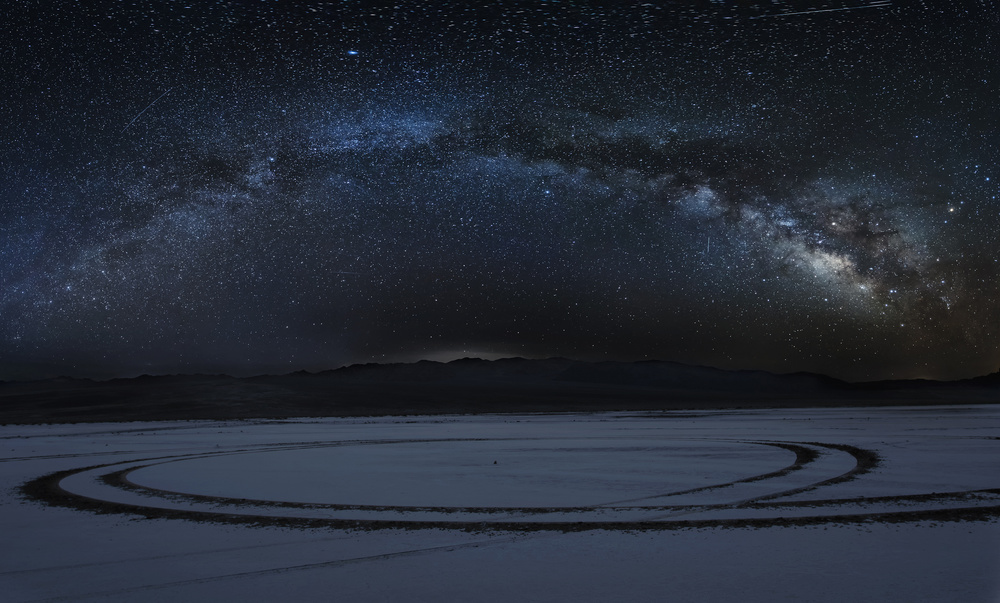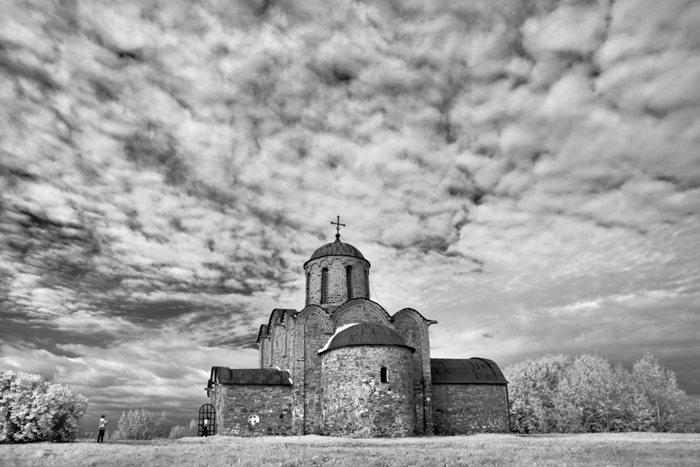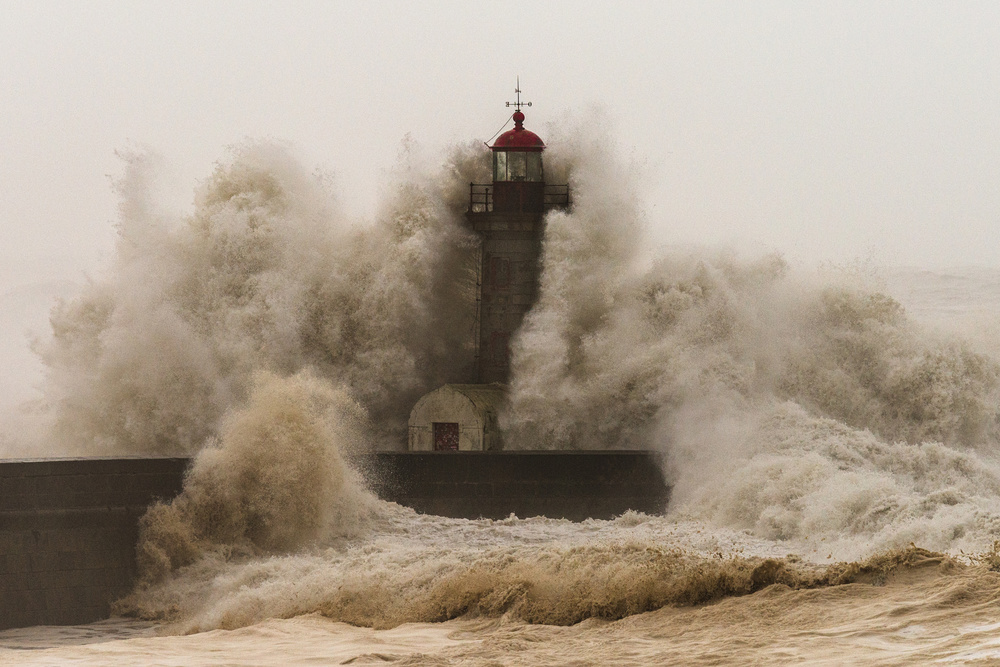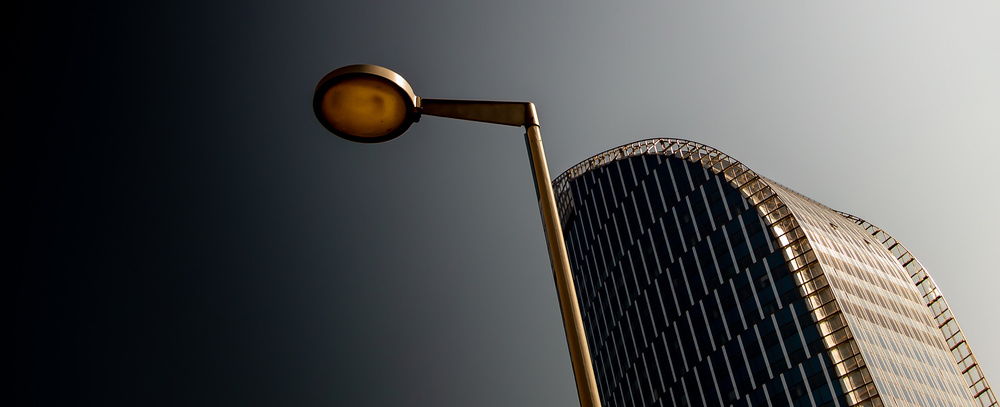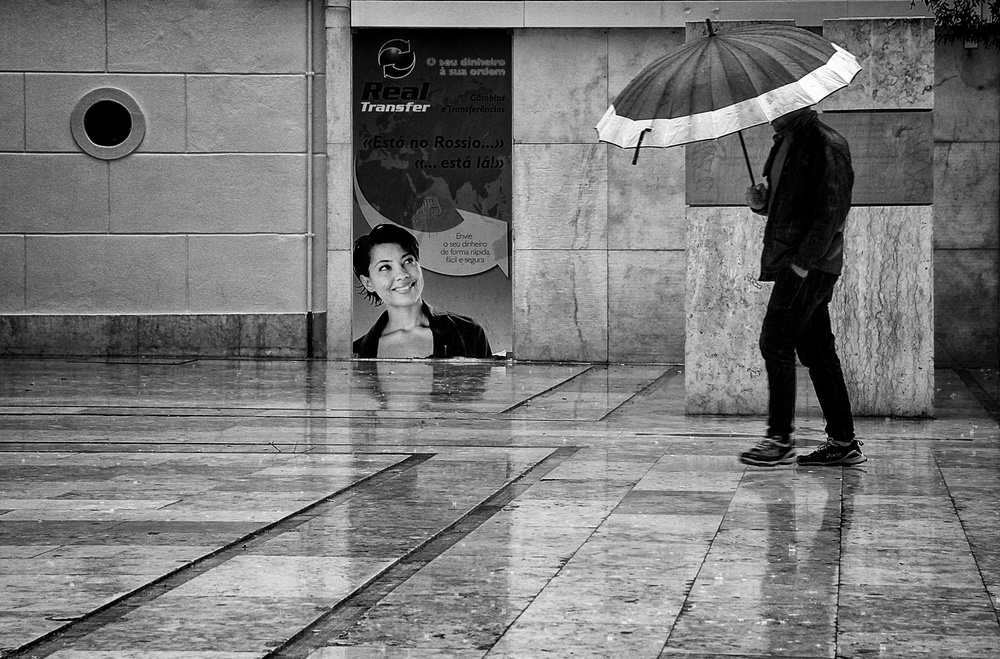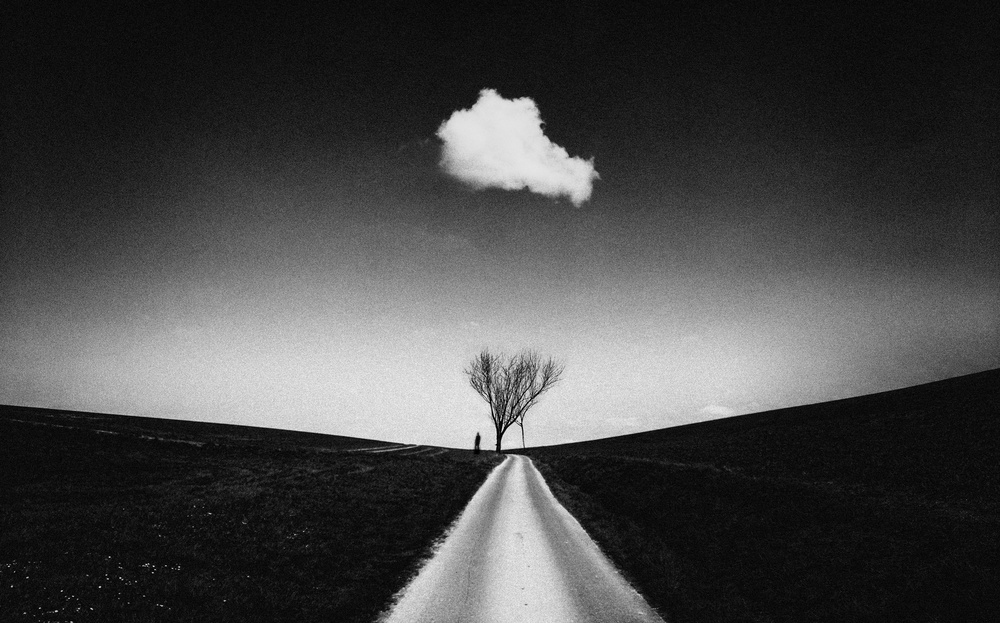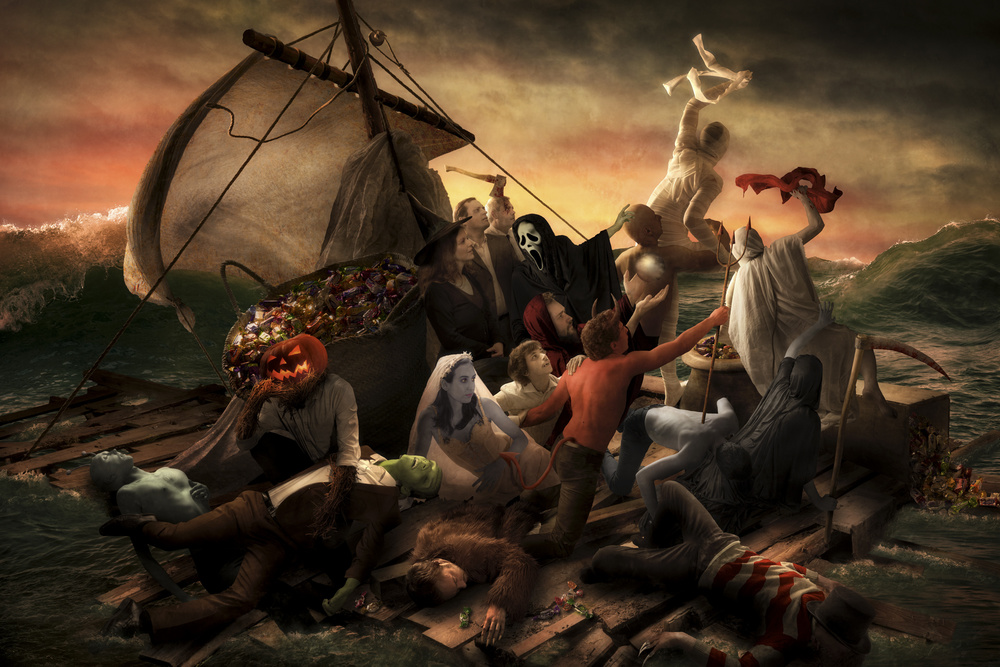Tips & Tricks
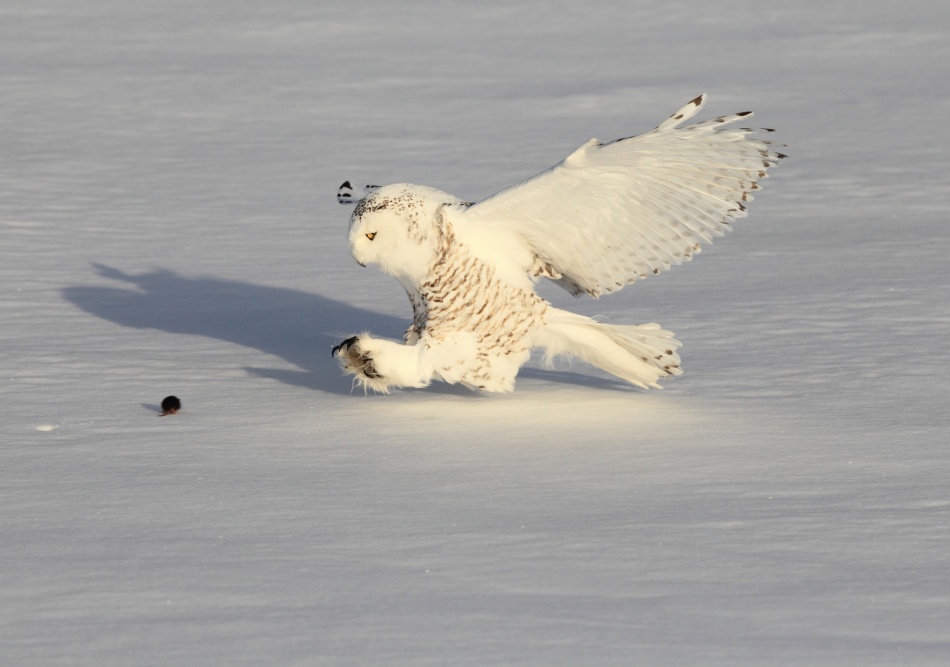
Snowy Owl and Prey
1x Blog-Tips & Tricks' .
When I got there, David was waiting for me at the airport, and he took me to a hotel where four other participants had already checked in. Early the next morning, the six of us drove to the snow-covered fields where David had been watching several snowy owls hunting for prey. We drove around for a couple of hours looking for the birds until we found three of them. We decided to drive to the one that was resting closest to the road. The bird was not far away and did not seem bothered by our presence. It was probably more focused on trying to catch its breakfast than focused on us, so we did not use any camouflage. Since it was during the month of February, the temperature was –4°F (–20°C) and my other Canon camera had stopped working. My EOS 1D Mark IV worked fine, though, without any protection from the cold.
We had to wait an hour before the owl took flight. I picked up my camera with the 300mm lens and started shooting ten frames per second. The owl seemed to have noticed something on the snow-covered ground, and suddenly turned its flight direction. It descended so close to the ground that its wings almost touched the snow. I used a fast shutter speed of 1/2000 second to freeze the owl’s wings, and an aperture of f/9 to sharply focus the whole body. Had I used an aperture of f/4 with a shallow depth of field, some parts of the bird would not have been in focus.
After many pictures of its level flight, I concentrated on catching the owl when it stretched its talons and wings to catch its prey. I was lucky to get a side view: at this angle, the picture clearly shows the action and the bird at the moment of its maximum stretch, as well as its prey, all in sharp focus. The hazy winter sun of Montreal was just strong enough to cast a pleasant shadow of the owl on the snow. I turned my back to the sun to capture the owl in direct light with no shadows on its body.
I took about one thousand pictures that day and this is the best of them all. It got great appreciation on the web for its quality and composition, proving to be a favorite wherever it was shared, 1x.com included.
During my 44 years as a photographer, I have taken photos of 38 different species of owls. Of these, the snowy owl is by far my favorite.
I have visited Alaska in the USA nine times to take pictures of owls during summertime, and this time I wanted to get some shots of owls in a snowy setting. In 2009, I found an ad for a four-day tour to photograph snowy owls in Montreal, Canada. I was very much impressed with the head-on snowy owl picture in flight by Mr. David Hemmings, the photography guide for the trip, so I immediately enrolled in his tour and started exchanging emails with him. He advised me to bring a telephoto lens of 300mm or longer. I prepared my 300mm f/2.8 as my main lens and a 400mm f/5.6 as a backup. Then I got ready to fly from Japan to Montreal.
"The bird was not far away and did not seem bothered by our presence. It was probably more focused on trying to catch its breakfast than focused on us, so we did not use any camouflage."
When I got there, David was waiting for me at the airport, and he took me to a hotel where four other participants had already checked in. Early the next morning, the six of us drove to the snow-covered fields where David had been watching several snowy owls hunting for prey. We drove around for a couple of hours looking for the birds until we found three of them. We decided to drive to the one that was resting closest to the road. The bird was not far away and did not seem bothered by our presence. It was probably more focused on trying to catch its breakfast than focused on us, so we did not use any camouflage. Since it was during the month of February, the temperature was –4°F (–20°C) and my other Canon camera had stopped working. My EOS 1D Mark IV worked fine, though, without any protection from the cold.
We had to wait an hour before the owl took flight. I picked up my camera with the 300mm lens and started shooting ten frames per second. The owl seemed to have noticed something on the snow-covered ground, and suddenly turned its flight direction. It descended so close to the ground that its wings almost touched the snow. I used a fast shutter speed of 1/2000 second to freeze the owl’s wings, and an aperture of f/9 to sharply focus the whole body. Had I used an aperture of f/4 with a shallow depth of field, some parts of the bird would not have been in focus.
"I was lucky to get a side view: at this angle, the picture clearly shows the action and the bird at the moment of its maximum stretch, as well as its prey, all in sharp focus."
After many pictures of its level flight, I concentrated on catching the owl when it stretched its talons and wings to catch its prey. I was lucky to get a side view: at this angle, the picture clearly shows the action and the bird at the moment of its maximum stretch, as well as its prey, all in sharp focus. The hazy winter sun of Montreal was just strong enough to cast a pleasant shadow of the owl on the snow. I turned my back to the sun to capture the owl in direct light with no shadows on its body.
I took about one thousand pictures that day and this is the best of them all. It got great appreciation on the web for its quality and composition, proving to be a favorite wherever it was shared, 1x.com included.
POST PROCESSING
I used Canon's software Digital Photo Professional for conversion and post-processing, applying only Noise Reduction Levels with Luminance NR at 3 and Chrominance NR at level 4. I cropped the image by removing about 15% all the way around.
TIPS
1) For this photo, I chose a center point AI Servo focus and tried to keep the owl in the dead center of the viewfinder. If I had chosen a multi-point AI Servo focus, the focus would have automatically moved to the bright surrounding, focusing on that area instead of the owl.
2) I chose to handhold my camera so that I could follow the undulating flight. Had I used a tripod, it might have been more difficult to move my lens smoothly following the wavy flight.
3) In order to emphasize the white body of the owl and create a clear difference between it and the white of the surrounding snow, I overexposed one stop.
2) I chose to handhold my camera so that I could follow the undulating flight. Had I used a tripod, it might have been more difficult to move my lens smoothly following the wavy flight.
3) In order to emphasize the white body of the owl and create a clear difference between it and the white of the surrounding snow, I overexposed one stop.
BIOGRAPHY
I have been taking pictures of birds for the past 44 years in 43 countries. The total number of the bird species I have photographed is about 1800. I won the annual Grand Prix award sponsored by Nikon in Japan with my other flight picture of an Ural owl at night. I have published one photo book and a field guide book on birds, as well as five CDs on birds. Apart from photography, I teach business English at a National Graduate School in Japan. I am writing a handbook on birds of Japan, which will contain approximately 500 species. It will be published as an e-book by Amazon Kindle.
. '


